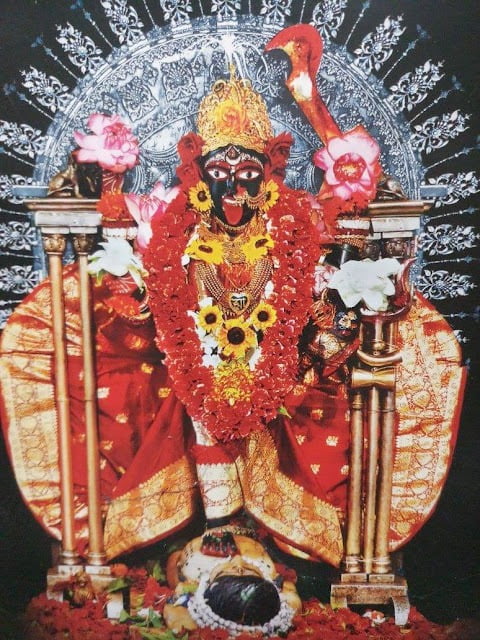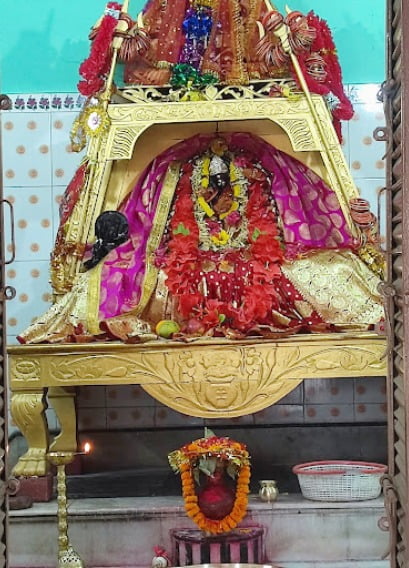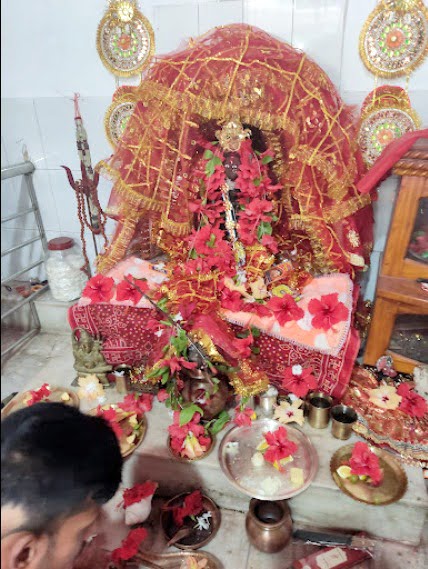Bhojshala Temple
Bhojshala Temple is an ancient structure in Dhar, Madhya Pradesh, India. The complex is currently disputed between Hindus and Muslims, with Hindus believing it to be a temple dedicated to Goddess Vagdevi, or Saraswati; for Muslims, it is the site of the Kamal Maula mosque. The archeological survey done by the ASI—Archaeological Survey of India—concludes the extant structure was originally a temple.
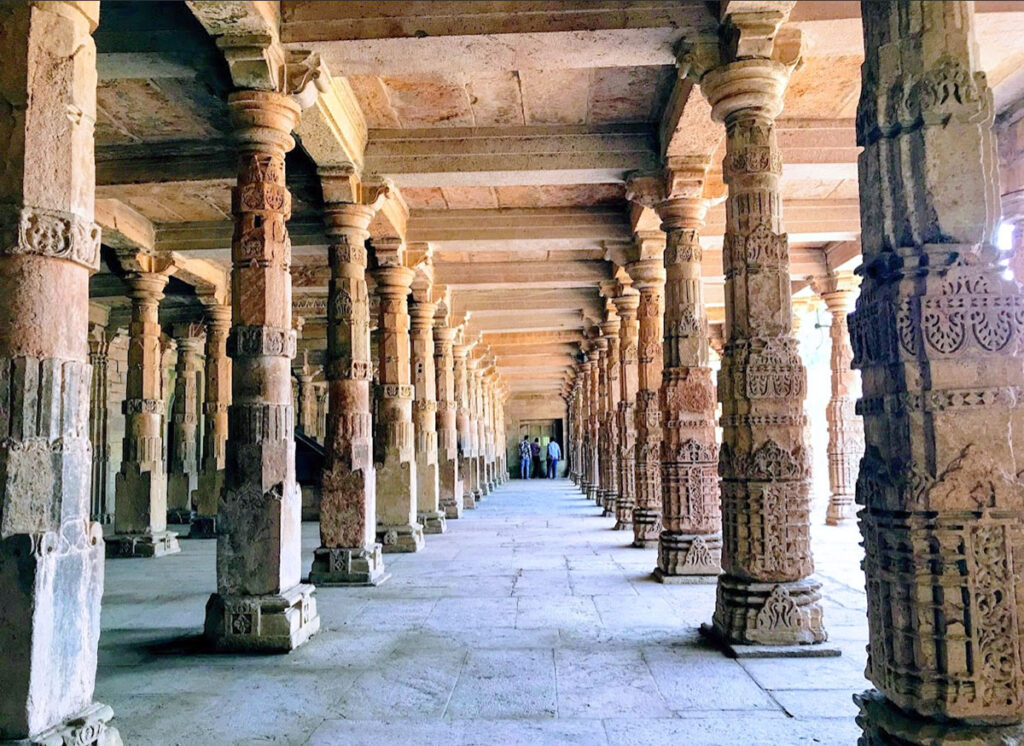
Contents
- 1 Bhojshala Temple History:
- 2 Legend of Bhojshala Temple:
- 3 Significance of Bhojshala Temple:
- 4 Myths and Beliefs of Bhojshala Temple:
- 5 Places to visit near Bhojshala Temple:
- 5.0.1 Divine Mata Vaishno Devi Temple | Shaktipeeth Complete Guide
- 5.0.2 Shri Jogadya Shaktipeeth, Kshirgram, West Bengal
- 5.0.3 Vibhash Shakti Peeth | Kapalini (Bhimarupa) Shaktipeeth
- 5.0.4 Ujani Shaktipeeth Shri Mangal Chandi Temple
- 5.0.5 Nandikeshwari Temple | Nandipur Shakti Peeth, Sainthia
- 5.0.6 Shree Trishrota Maa Bhramoree Debir Shaktipeeth Temple
- 6 FAQ:
- 6.0.1 What is the Bhojshala Temple?
- 6.0.2 What is the importance of Bhojshala Temple?
- 6.0.3 When was the Bhojshala Temple built?
- 6.0.4 Visiting hours of Bhojshala Temple
- 6.0.5 Is it free, or will one have to pay an entry fee to visit the Bhojshala Temple?
- 6.0.6 What to see in Bhojshala Temple?
- 6.0.7 Are there any days when crowding at Bhojshala Temple worsens?
- 6.0.8 How to Reach Bhojshala Temple
- 6.0.9 Bhojshala Temple Nearby Accommodations
- 6.0.10 Can one take photographs inside Bhojshala Temple?
- 6.0.11 Are there local guides at Bhojshala Temple?
- 6.0.12 What are other places near Bhojshala Temple that I can visit?
- 7 How to reach Bhojshala Temple:
Bhojshala Temple History:
Origins (11th Century):
- King Bhoja of the Paramara dynasty established Bhojshala Temple in Dhar, Madhya Pradesh, during circa 1034 AD.
- It was essentially a renowned center of learning that was dedicated to Goddess Saraswati, the presiding deity of knowledge and learning
- Scholars believe that alongside the institutions of learning, Bhojshala Temple also had an excellent temple building structure.
Controversial Phase (14th-16th Centuries):
- The area was attacked, and the Bhojshala Temple was raided.
- Some reports mention that the complex was damaged by Muslim rulers such as Alauddin Khilji and Mahmud Shah Khilji between 1305 AD and 1514 AD.
- According to some sources, parts of this temple were converted into what is now the Kamal Maula mosque during this very time.
Later Developments (18th Century Onwards):
- In the 19th century, the British took over the Malwa region.
- Bhojshala Temple came under the Archaeological Survey of India (ASI) in 1952 for preservation.
- The debate has raged for decades over whether the site was originally a temple or a mosque.
Recent Developments:
An anti-disciplinary ASI survey conducted in 2024 found the Bhojshala complex had an ‘extensive Hindu Temple’ with prior structures to the Islamic additions.
ASH Report Awaits Hearing From Madhya Pradesh High Court.
Read More>> Grishneshwar Temple: Wealth and Pleasure at Shiva’s Feet
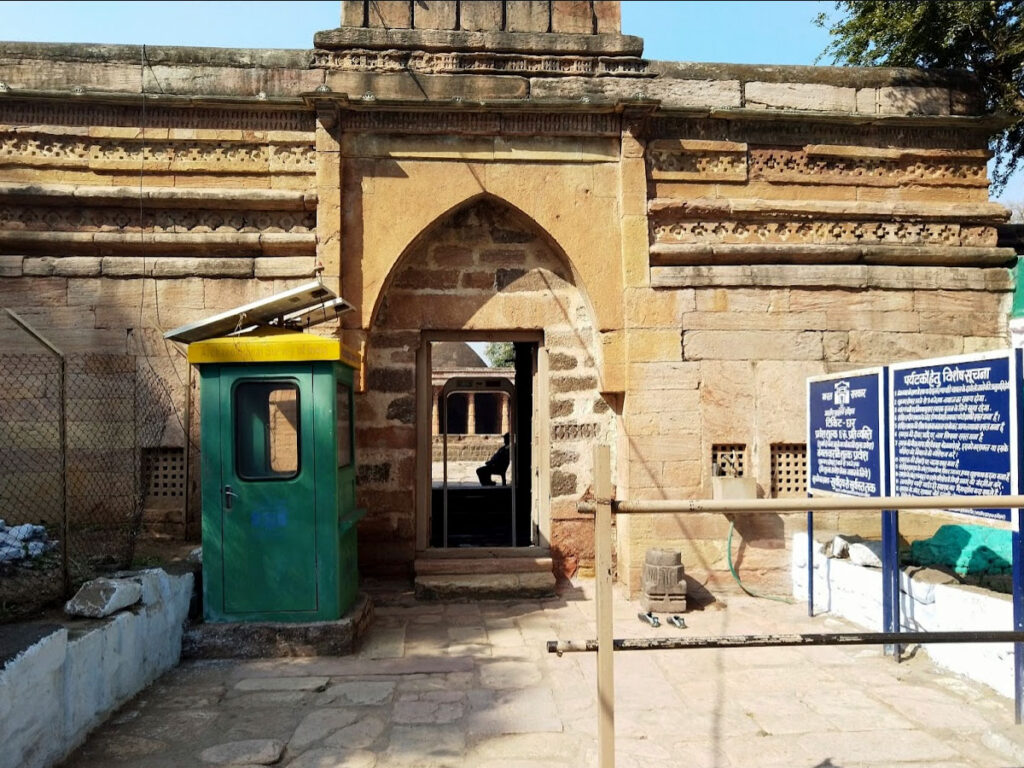
Legend of Bhojshala Temple:
Hindu Legend:
- Links it to King Bhoja of the Paramara dynasty, who was a great scholar and patron of arts.
- Says that the building was designed as a huge temple dedicated to Goddess Saraswati (Vagdevi), the goddess of knowledge and learning.
- It has also, in part, originated from the association of King Bhoja with education and the partial deciphering of an inscription mentioning both “Bhoja” and “Vagdevi”.
Dispute And Reinterpretation:
- Historical and archeological evidence suggests that the complex might have been a different structure altogether.
- An ASI survey points to the possibility of a large educational or literate institute rather than a temple dedicated to Saraswati.
- Not to mention, re-examining the inscription itself revealed it talks about “Ambika”, a Jain goddess and not Vagdevi as reported earlier.
Present Situation:
- The complex is currently a mosque with some Hindu elements.
- The purpose that the building was built for remains debated.
- An agreement allows Hindus to perform puja on Tuesdays and for Muslims to offer namaz on Fridays.
Read More>> Secret Goddess: Guhyeshwari Temple
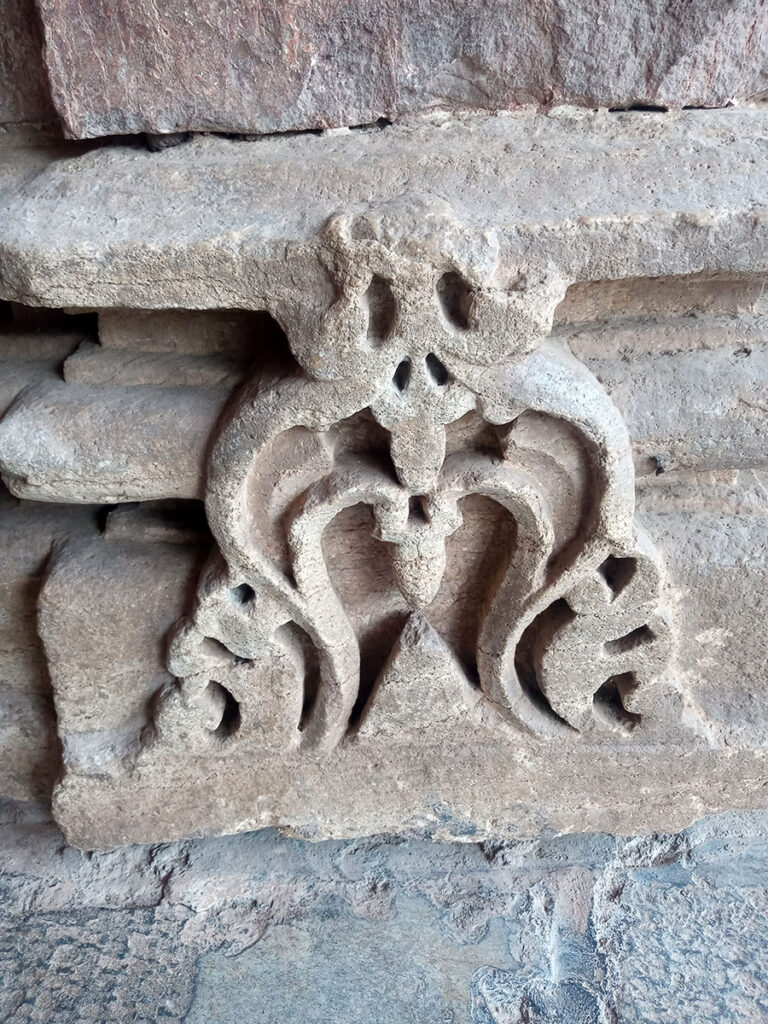
Significance of Bhojshala Temple:
Historical Significance: The same was constructed in the 11th century under Parmar King Bhoja and is an architectural wonder that gives an insight into the construction methods employed and followed art forms in that era.
Religious Significance: In the Hindu pantheon, it is considered a Saraswati temple and is dedicated to the goddess of learning. King Bhoja himself was an accomplished scholar and a great patron of art and letters, and the Bhojshala Temple has survived as a lasting legacy of that wonderful tradition.
Architectural Value: It reveals the merging of styles in architecture, which could represent the serial development of this monument. The ASI survey reveals the evidence for a huge earlier structure of literary and educational value [2].
Archaeological Significance: The dispute over the Bhojshala Temple has sparked an ASI survey that could produce valuable insights into the history and past structures for this site.
Controversial Significance: This place gains further controversial significance for being the site of a temple and a mosque, respectively, for the Hindus and Muslims. It reflects the never-ending tussle over religious heritage in India.
Read More>> Anandamayee Shakti Peeth Temple

Myths and Beliefs of Bhojshala Temple:
Hindu Myths and Beliefs:
Saraswati Temple: Some believe at the paramount level that Bhojshala Temple was actually a Saraswati temple, the goddess of knowledge and learning in Hindu mythology. The legend narrates that it was built in the 11th century by King Bhoja, himself a great scholar-king.
Learning Center: It is said to have been one of the major learning centers which attracted scholars and students from far and wide.
Blessings of Saraswati: According to Hindus, Tuesdays are associated with Saraswati. They visit this Bhojshala Temple to pray for knowledge and wisdom. There’s a belief that water used in rituals is allowed to flow out through a well called “Saraswati Koop,” which is collected by students as prasad.
Controversy:
Mosque vs Temple: Whereas the Hindus believe it was a Saraswati temple, historical evidence is discovered, which suggests that it might have been a temple converted into a mosque in the times of Muslim rule. The ASI report mentions a big temple structure but does not definitively confirm a Saraswati temple.
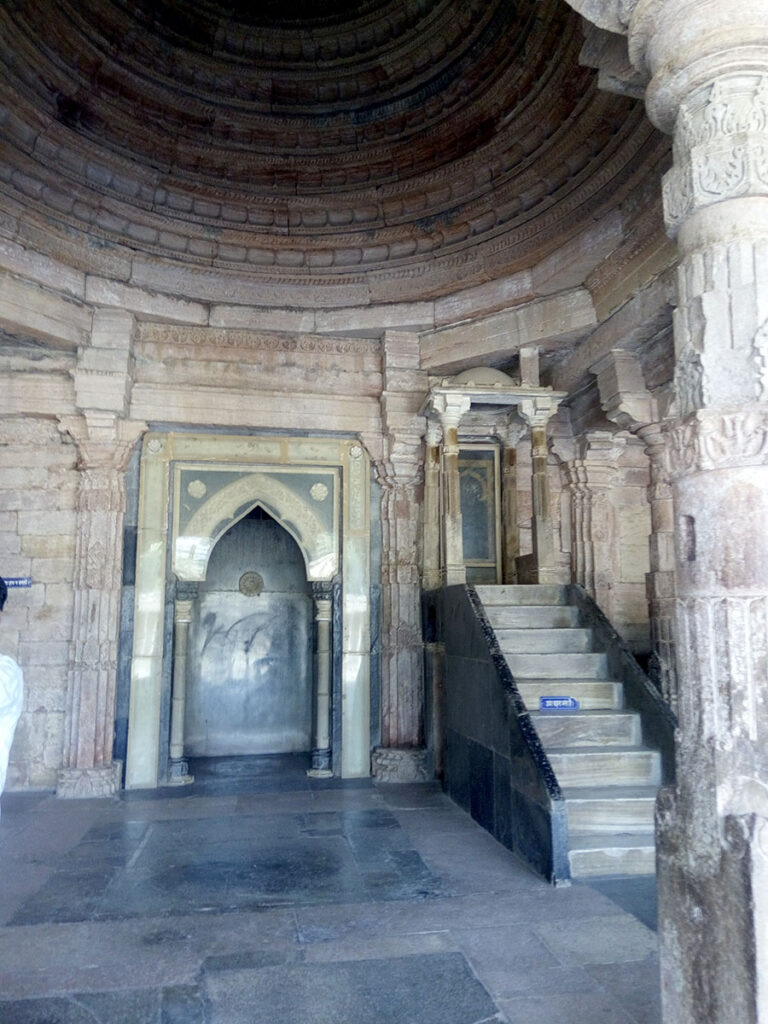
Places to visit near Bhojshala Temple:
Dhar Fort: Perhaps one of the greater forts in the 16th century all over India—perched on top of a hill overlooking the city of Dhar. From here, one is afforded scenic views of the surroundings, while all the breathtaking monuments lie within its walls, from the Pillared and Jahaz Mahal to the Tomb of Rani Roopmati.
Dhar Museum: This museum is placed inside the walls of the Dhar Fort and contains archaeological artifacts showing sculptures and paintings that describe the rich cultural heritage of this place.
Kamal Maula Mosque: This Mosque lies right opposite the Bhojshala Temple and was built, according to tradition, as far back in time as the 15th century AD by Dilawar Khan Ghuri. Intricate architecture and delicate marble work adorn this mosque.
Chaturbhuj Temple: It lies near the Bhojshala, and this 11th-century temple has been dedicated to Lord Vishnu. It is an architectural beauty that reflects intricate carvings.
Raja Bhoj’s Samadhi: Situated about 3 km from Bhojshala can be found the tomb of King Bhoj. This tomb is crafted in a single type of red stone and quite a simple structure.
Mandu: This is one of the ancient capitals of the Malwa Sultanate. This historic town is located approximately 35 km from Dhar; it contains several marvelous monuments, out of which the important ones that cannot be missed include Rewa Kund, Jami Masjid, and Hosang Shah’s Tomb.
Bagh Caves: 25 km from Dhar, a group of nine caves are rock-cut and belong to the 4th-5th centuries AD. Frescoes depicting scenes from Buddha’s life bring fame to the caves.
FAQ:
What is the Bhojshala Temple?
The Bhojshala temple represents one of the ancient temples and a major historical place located in Dhar, Madhya Pradesh within India. This temple, according to Hindu mythology, has been dedicated to Saraswati, who happens to be the goddess of knowledge, wisdom, and art.
What is the importance of Bhojshala Temple?
The temple depicts the historical, cultural, and religious importance of the region. It was one of the major learning centers amongst the people in ancient times, and religiously it was the holy forms of worship of Saraswati. This region depicts the style and heritage of architecture.
When was the Bhojshala Temple built?
Bhojshala Temple was constructed in the 11th century by King Bhoja, who was the then-ruling king of the Paramara dynasty.
Visiting hours of Bhojshala Temple
The temple remains open all seven days a week. However, timings are subject to periodical changes, so one may always want to check the most recent update on visiting time before a visit.
Is it free, or will one have to pay an entry fee to visit the Bhojshala Temple?
One is not normally required to pay an entry fee to visit Bhojshala Temple. However, this being subject to change, it is best to clarify that at present.
What to see in Bhojshala Temple?
Ancient temple architecture with intrinsic carvings and inscriptions are there. There is also a mosque here, which is called Kamal Maula, revealing the common heritage and cultural fusion of this area.
Are there any days when crowding at Bhojshala Temple worsens?
It gets more crowded on Fridays and during special festivals or events since this is also a local worshiping site for the Muslims.
How to Reach Bhojshala Temple
The temple is located in Dhar, Madhya Pradesh, and can easily be reached from big nearby cities like Indore, which is at a distance of about 70 km, by road. At Indore, one has both the nearest railway station as well as the nearest airport, the Devi Ahilya Bai Holkar Airport.
Bhojshala Temple Nearby Accommodations
The place is well facilitated with as adequate services as possible, ranging from budget to more luxury, inns and hotels in Dhar and the nearby city of Indore.
Can one take photographs inside Bhojshala Temple?
One should enquire with the local authorities or the temple management regarding the same before taking snaps inside.
Are there local guides at Bhojshala Temple?
One can seek the services of local guides for an appropriate prologue of the temple concerning its history, architectural importance, and significance.
What are other places near Bhojshala Temple that I can visit?
Other nearby attractions are Mandav, Mandu, Dhar Fort, Bawangaja, Jahaz Mahal, Baz Bahadur’s Palace, Jama Masjid, and the Hindola Mahal.
How to reach Bhojshala Temple:
By Air:
The nearest airport is Indore Airport, which is at a distance of about 90 km from Dhar. You can hire a taxi from here to reach Dhar or board the bus.
By Train:
The nearest junction is Indore Junction, which is about 65 km away from Dhar. You may hire a taxi or board a bus from Indore Junction and then reach your destination at Dhar.
By Road:
BUS Regular bus services operate from Indore, Bhopal, and Ujjain.
TAXI/CAR You can ride a taxi or drive your car. Roads are well-connected and in good condition.
Directions from Indore
via NH47 : In Indore, take the SE direction on NH47 from Indore via Mhow and straightaway to Dhar.
via NH52 : Take the NH52 to Mhow and Turn onto NH47 on way to Dhar.



